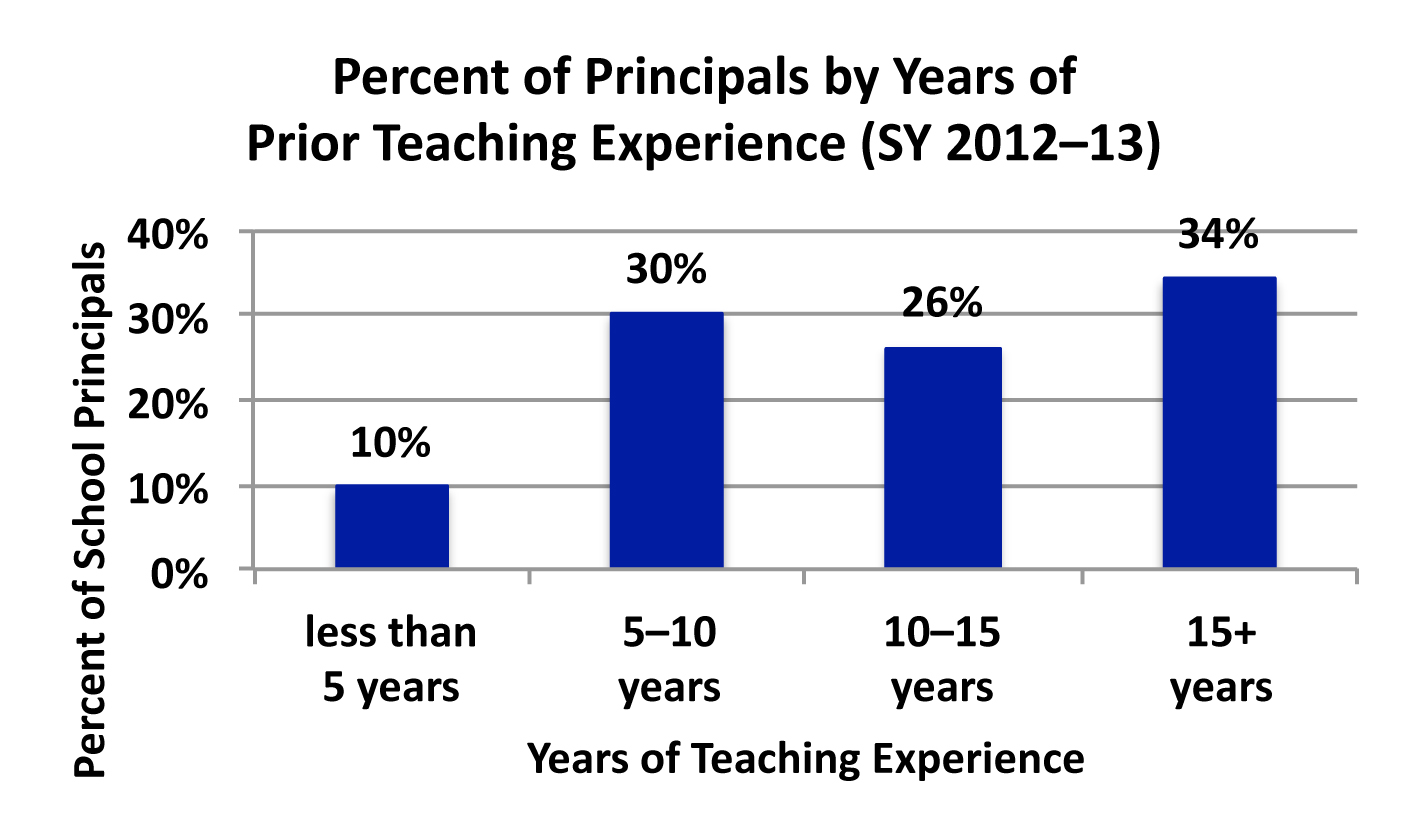How much teaching experience do school principals have prior to becoming principals?
Why is this question important? School principals are the second most important school-related factor, after teachers, in influencing student performance, accounting for about a quarter of total school effects (Marzano, Waters, & McNulty, 2005). There is increasingly clear evidence as to which practices of principals are associated with teaching effectiveness, student achievement, and high-performing schools (Robinson, Lloyd, & Rowe, 2008). It is critically important to analyze the best career path for producing effective school principals; the various paths include professional development, on-the job training, and prior experience, in particular, teaching experience. This analysis describes the extent to which school principals in 2012–13 had teaching experience.
See further discussion below.

Results: The data aren't clear about how many of the principals with less than 5 years of teaching experience actually had no teaching experience at all. However, it is clear that in school year 2012–13 the vast majority (90%) of school principals had significant (5 or more years) prior teaching experience, and over 60% had more than 10 years of teaching experience.
Implications: Prior work experience can have a huge impact on a person’s readiness to become a school principal. It is clear that virtually all school principals in 2012–13 had prior experience in teaching. However, at least one study found that experience in teaching had no impact on principal effectiveness (Clark, Martorell, & Rockoff, 2009). Given the prevalence of school principals coming from the ranks of teachers, it becomes critically important to study more closely what type of prior experience is most useful in producing effective principals.
Study Description: The 2012–13 Principal Follow-up Survey (PFS) is a component of the Schools and Staffing Survey (SASS), a nationally representative sample survey of public and private K–12 schools, principals, and teachers in the 50 states and District of Columbia. The purpose of the SASS is to collect information that can provide a detailed picture of U.S. elementary and secondary schools and their staff. It was developed by the National Center for Education Statistics (NCES) of the Institute of Education Sciences within the U.S. Department of Education and was conducted by the U.S. Census Bureau. The SASS covers a wide range of topics including teacher demand, teacher and principal characteristics, general conditions in schools, principals’ and teachers’ perceptions of school climate and problems in their schools, teacher compensation, district hiring and retention practices, and basic characteristics of the student population.
Citation:
Clark, D., Martorell, P., & Rockoff, J. (2009). School principals and school performance. National Center for Analysis of Longitudinal Data in Education Research (Working Paper 38). Washington, DC: Urban Institute.
* Goldring, R., & Taie, S., (2014). Principal attrition and mobility: Results from the 2012–13 principal follow-up survey, first look. (NCES 2014-064). U.S. Department of Education. Washington, DC: National Center for Education Statistics.
Marzano, R. J., Waters, T., & McNulty, B. A. (2005). School leadership that works: From research to results. Alexandria, VA: Association for Supervision and Curriculum Development.
Robinson, V. M. J., Lloyd, C. A., & Rowe, K. J. (2008). The impact of leadership on student outcomes: An analysis of the differential effects of leadership types. Educational Administration Quarterly, 44(5), 635–674.
*study from which graph data were derived
